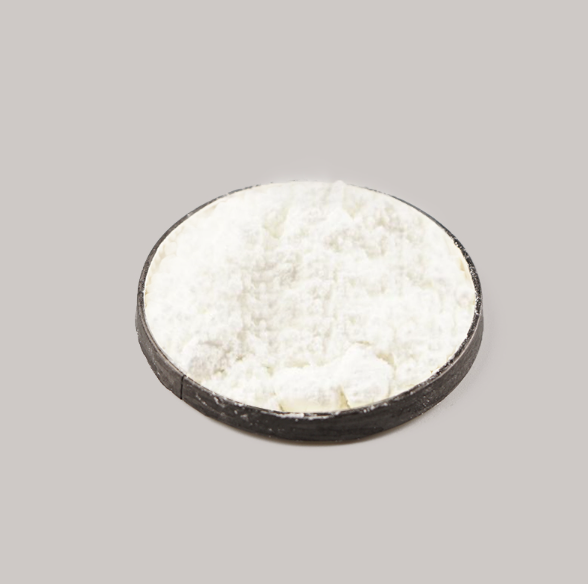Sustainability & Performance: ZMBT Rubber Accelerator Leads the Way
14/03/2024
As a secondary accelerator, ZMBT facilitates the cross-linking of polymer chains, enhancing rubber products’ strength, elasticity, and heat resistance. Its compatibility with diverse elastomers and favorable aging properties make it a versatile choice for manufacturing tires, seals, hoses, and footwear. Backed by CHEMBROAD’s expertise, the ZMBT rubber accelerator maintains its position as a reliable solution for optimizing rubber production processes and product performance.
Introduction to ZMBT Rubber Accelerator
1.1 Understanding ZMBT as a Rubber Accelerator
ZMBT, or zinc 2-mercaptobenzothiazole, is a crucial component in the rubber industry. It serves as an accelerator, facilitating the vulcanization process in rubber production. Vulcanization is essential for enhancing the durability, strength, and elasticity of rubber materials, making them suitable for various applications across industries.
1.2 Importance of ZMBT in the Rubber Industry
The rubber industry heavily relies on accelerators like ZMBT to expedite the vulcanization process. Without accelerators, the curing of rubber would be significantly slower and less efficient, hindering mass production. ZMBT plays a vital role in meeting the high demands for rubber-based products in sectors such as automotive, construction, and consumer goods.
1.3 Basic Properties and Characteristics of ZMBT
ZMBT exhibits favorable properties for rubber acceleration. It typically appears as a pale yellow powder and is soluble in chloroform, benzene, and acetone. This accelerator offers excellent heat resistance and stability during processing, ensuring consistent results in rubber manufacturing. Moreover, ZMBT contributes to improved aging properties and enhances the overall performance of rubber products.
Current Status of ZMBT in the Rubber Industry
2.1 Market Demand for ZMBT
The demand for ZMBT remains robust in the rubber industry, driven by the continuous growth of sectors utilizing rubber materials. Manufacturers seek reliable accelerators like ZMBT to streamline production processes and meet escalating market demands for high-quality rubber products.
2.2 Usage Trends and Patterns
ZMBT finds extensive application across diverse sectors of the rubber industry. It is commonly employed in the production of tires, conveyor belts, seals, and automotive components. Additionally, ZMBT is favored for its compatibility with various rubber formulations, allowing manufacturers to achieve desired properties and performance characteristics in their products.
2.3 Comparison with Other Rubber Accelerators
While ZMBT is widely utilized, it competes with other rubber accelerators such as MBTS (dibenzothiazole disulfide) and TBBS (N-tert-butyl-2-benzothiazolesulfenamide). Each accelerator offers unique advantages and may be preferred based on specific application requirements, processing conditions, and cost considerations.

Needs and Applications of ZMBT in Rubber Production
3.1 Specific Needs Addressed by ZMBT
ZMBT effectively addresses the need for accelerated vulcanization in rubber production, enabling faster curing times and improved productivity. Its compatibility with various elastomers and rubber formulations makes it an ideal choice for manufacturers seeking versatility and consistency in their processes.
3.2 Applications Across Rubber Products
ZMBT finds widespread use in the production of diverse rubber products, including tires, footwear, industrial hoses, and sealing materials. Its ability to enhance the mechanical properties, heat resistance, and aging characteristics of rubber makes it indispensable for meeting the stringent performance requirements of end-users.
3.3 Advantages of ZMBT in Specific Scenarios
In specific scenarios, ZMBT offers distinct advantages over other accelerators. For instance, its fast curing rate makes it particularly suitable for applications requiring rapid processing and high production volumes. Additionally, ZMBT’s compatibility with sulfur-based curing systems enhances cross-linking efficiency, leading to superior mechanical properties in the final rubber products.
Challenges Faced in ZMBT Rubber Accelerator Usage
4.1 Manufacturing Process Challenges
Manufacturers often encounter challenges during the manufacturing process with ZMBT. One common issue is the proper dispersion of ZMBT within rubber compounds, which can affect the uniformity and quality of the final product. Additionally, ZMBT’s reactivity with other ingredients in rubber formulations requires careful control to avoid undesirable reactions and ensure optimal curing properties.
4.2 Environmental and Regulatory Challenges
The usage of ZMBT raises environmental and regulatory concerns due to its potential impact on ecosystems and human health. ZMBT is classified as a hazardous substance in certain regions, necessitating compliance with stringent regulations governing its handling, storage, and disposal. Moreover, the byproducts of ZMBT decomposition may pose risks to environmental integrity, necessitating sustainable practices in its usage.
4.3 Compatibility and Performance Issues
Compatibility and performance issues may arise when using ZMBT in different rubber formulations. Variations in elastomer types, filler content, and processing conditions can affect ZMBT’s effectiveness as an accelerator. Incompatibilities may lead to uneven curing, reduced mechanical properties, or compromised product performance, highlighting the need for tailored solutions to address specific formulation challenges.
Solutions and Innovations in ZMBT Rubber Accelerator
5.1 Emerging Technologies and Formulations
Innovations in ZMBT technology and formulations aim to address performance limitations and enhance its efficacy in rubber acceleration. Researchers are exploring novel additives, dispersants, and processing techniques to improve ZMBT’s dispersion, reactivity, and compatibility with diverse rubber matrices. These advancements enable manufacturers to optimize curing processes and achieve desired product properties more efficiently.
5.2 Sustainable Practices and Alternatives
To mitigate environmental concerns associated with ZMBT usage, industry stakeholders are adopting sustainable practices and exploring alternative accelerators with lower environmental impact. Sustainable sourcing of raw materials, waste minimization strategies, and recycling initiatives contribute to reducing ZMBT’s ecological footprint. Furthermore, the development of eco-friendly accelerators derived from renewable resources offers promising alternatives to conventional ZMBT formulations.
5.3 Case Studies and Success Stories
Several case studies and success stories illustrate effective solutions to ZMBT-related challenges in rubber manufacturing. Collaborative efforts between industry partners, research institutions, and regulatory bodies have led to the development of innovative technologies and best practices for ZMBT usage. These success stories highlight the importance of proactive problem-solving and knowledge-sharing in overcoming obstacles and driving positive change in the rubber industry.
Trends Shaping the Future of ZMBT Rubber Accelerator
6.1 Future Demand and Growth
Despite facing challenges, the demand for ZMBT is expected to grow steadily in the coming years, driven by the expanding rubber industry and increasing application requirements. Emerging markets, particularly in Asia-Pacific and Latin America, present lucrative opportunities for ZMBT suppliers like CHEMBROAD to expand their presence and cater to evolving customer needs.
6.2 Technological Advancements
Technological advancements will continue to shape the production and application of ZMBT in the rubber industry. Automation, digitalization, and data analytics are revolutionizing manufacturing processes, enabling more precise control over ZMBT formulations and curing parameters. Additionally, research in nanotechnology and materials science holds potential for developing next-generation ZMBT accelerators with superior performance and environmental sustainability.
6.3 Shifts in Consumer Preferences and Regulations
Changing consumer preferences and regulatory standards influence the usage of ZMBT in rubber products. Growing awareness of environmental issues and health concerns drives demand for eco-friendly and non-toxic alternatives to conventional ZMBT accelerators. Regulatory initiatives aimed at reducing hazardous chemical emissions and promoting sustainable manufacturing practices further shape the future landscape of ZMBT usage in the rubber industry.
Environmental Impact and Sustainability of ZMBT
7.1 Assessment of Environmental Footprint
Assessing ZMBT’s environmental footprint throughout its lifecycle is essential for identifying areas of improvement and implementing sustainable practices. Life cycle assessments (LCAs) evaluate the environmental impacts of ZMBT production, usage, and disposal, providing valuable insights into resource consumption, emissions, and waste generation. These assessments inform decision-making processes and guide efforts to minimize ZMBT’s environmental footprint.
7.2 Strategies for Minimizing Environmental Impact
Implementing strategies to minimize ZMBT’s environmental impact requires collaboration across the supply chain and the adoption of holistic approaches to sustainability. Sustainable sourcing of raw materials, energy-efficient manufacturing processes, and waste management initiatives contribute to reducing ZMBT’s carbon footprint and ecological footprint. Furthermore, investing in research and development of greener alternatives and circular economy solutions fosters long-term environmental stewardship and resilience in the rubber industry.
7.3 Exploration of Sustainable Alternatives
Exploring sustainable alternatives to ZMBT accelerators is crucial for promoting environmental sustainability and addressing regulatory challenges. Bio-based accelerators derived from renewable resources offer promising alternatives with lower toxicity and reduced environmental impact. Additionally, green chemistry principles guide the design and synthesis of eco-friendly accelerators that meet performance requirements while minimizing adverse effects on human health and the environment. By embracing innovation and sustainability, the rubber industry can mitigate the environmental impact of ZMBT usage and contribute to a more sustainable future.
Conclusion
In conclusion, the ZMBT rubber accelerator plays a pivotal role in the rubber industry by expediting the vulcanization process and improving the performance characteristics of rubber materials. As market demands continue to rise, manufacturers rely on ZMBT to meet production targets and deliver high-quality products across various sectors. With its versatility, compatibility, and efficiency, ZMBT remains a preferred choice for enhancing the value and functionality of rubber-based applications.




